Many owners are concerned about the question of how to collect urine from a cat for analysis. To do this, prepare the litter tray: remove the filler, wash it, and rinse it with boiling water. You do not need to use aggressive detergents, such as bleach. Even if the pet doesn’t like the empty litter tray, he will use it sooner or later. Drain the liquid into a jar, take it to the clinic.
- Cat urinary incontinence
- Causes
- Symptoms
- Causes of urinary incontinence
- Neurogenic
- Structural abnormalities
- Functional disorders
- Symptoms
- What to do if the cat does not retain urine, how to help the animal?
- Cat urinary incontinence – treatment
- Prevention to prevent cat urinary incontinence
- Prognosis and possible complications
- Preventing problems with the urogenital system
Cat urinary incontinence
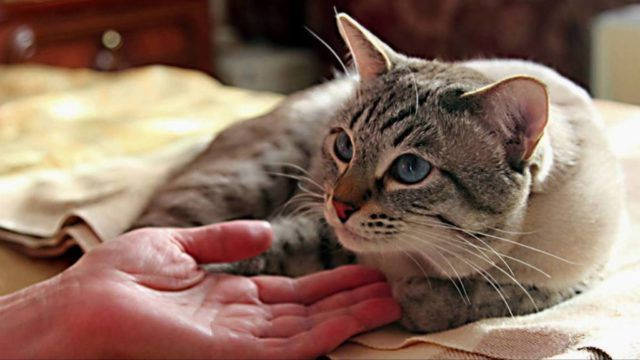
To live comfortably in an urban apartment, today most citizens, especially single people, tend to get a cat. A cat in the apartment today has become one of the ways to foster a sense of kindness and responsibility. When you buy a cat, all of its owners want their favorite animal does not bring in the established order, a certain discomfort. This is especially true of the toilet. One of the causes of this discomfort is urinary incontinence.
Urinary incontinence in cats can be more or less pronounced for its owners.
Given that urinary incontinence is mainly a consequence of diseases of the urogenital system, cat owners should be aware of the physiological basis of the urinary system. More details about the workings and structure of the urinary system are outlined in our article – urinary incontinence in dogs.
In order to timely determine in their beloved cat the presence of this problem and apply to the veterinary clinic with this problem in time, cat owners must have an understanding of the varieties of urinary incontinence in cats.
Leaking or dripping urine. This incontinence in cats is accompanied by the fact that there is leakage of urine in small amounts, sometimes in the form of a few drops. Detecting such a disorder in a cat is sometimes quite difficult for the owner and it does not always occur to him that the detection of small wet spots on the carpet, bedding or on the floor is due to urinary incontinence in your pet.
Persistent or regular urine leakage. With this type of incontinence, cat owners notice that the cat excretes urine not only when the cat is active, but also when it is resting. With this type of incontinence, when the bladder is full, the urine is constantly running out onto the floor, carpet, etc. and the cat is not always able to run to the litter box when it feels the urge to urinate. This means that the cat will enter a state in which it is unable to control its urination.
Causes
Uncontrolled urination in the cat – is not an independent disease, but a symptom of various pathologies: neurogenic nature, anomalies in the structure of the urinary system, functional disorders or mental and emotional stress.
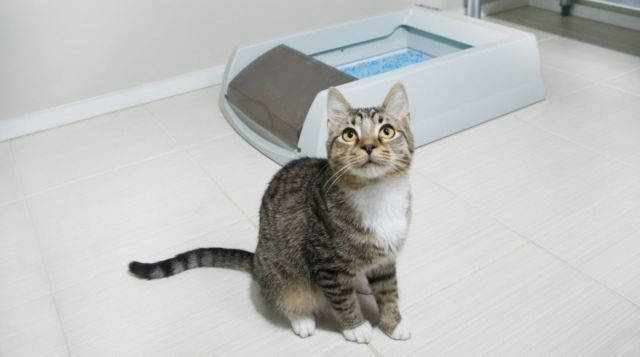
The main reasons for the cat began to urinate not in the litter box, but in the wrong places, include the following:
- Infections in any part of the urinary system.
- Congenital abnormalities of the genitourinary system.
- IBC (urolithiasis).
- Metabolic disorders associated with diabetes, obesity. Urine is usually excreted in a drip.
- Damage to the brain or spinal cord due to trauma, hypertension, inflammatory processes.
- Older age of the pet. In old age, all systems of the body can no longer cope with their functions, the muscles weaken, which leads to urine leakage.
- Frequent births. A cat that gives birth more than once a year does not have time to regenerate its urogenital system, which causes the bladder to malfunction. This leads to persistent incontinence.
- Spasm of the bladder muscles. Urine is excreted once.
- Paralysis of the lower body, limbs. The cat urinates constantly.
- Trauma and damage to the bladder. Urination of varying degrees.
- Oncology and benign tumors in the bladder and urethra.
- Surgery (including castration), during which the nerve endings were affected.
Sometimes the problem of uncontrolled urine excretion can be encountered after the cat has had a catheter placed. This phenomenon goes away after a few days on its own without treatment.
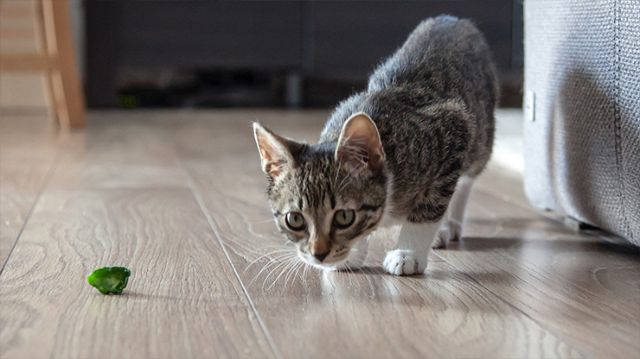
Symptoms
It is impossible not to notice urinary incontinence in a pet. Wet spots remain in places where the cat was just standing or sitting, and she always has wet hair on the inside of her thighs, under the tail.
In addition, the behavior of the animal changes. Cats by nature are very clean animals, from an early age accustomed to the litter box. With an involuntary secretion of urine embarrassment can happen at any time – during sleep or wakefulness, when the cat just does not have time to run to the litter box.
Realizing that she made a puddle in the wrong place, the poor cat looks frightened and restless. And if the owners start swearing, expressing indignation at the misdemeanor and even more so, resorting to measures of punishment, it becomes a strong stress for the animal.
Based on the degree to which the urine is excreted, there are several forms of incontinence:
- Underpooping. The urine is excreted involuntarily in a small volume, dripping, after physical exertion. The general condition of the cat is unsatisfactory.
- Constant secretion. Urine leaks every time after every movement and change of the cat’s body position. Rear part, abdomen are constantly wet. The bedding where he rests is soaked through with urine. The animal smells foul and, experiencing great discomfort, is constantly licking.
- Urge incontinence. The cat has no urge to urinate. Because of this, the bladder overflows and the urine flows out arbitrarily. This bothers the pet, who does not understand what is happening to him. He needs to be reassured, but by no means scolded.
- Stressful. Urine leaks in varying amounts, from a few drops to a copious discharge.
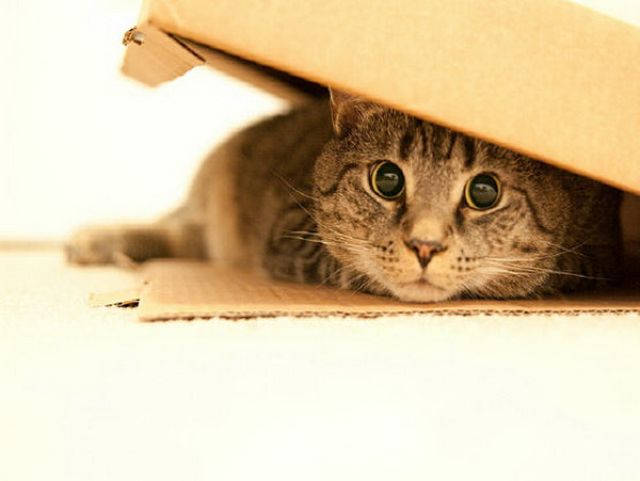
Regardless of how often and in what volume the cat excretes urine, you should immediately take the cat to the veterinary clinic, where he will be examined by a veterinarian.
Causes of urinary incontinence
Neurogenic
Caused by a malfunction of the nervous system, which can occur from injuries, tumors and hernias on the spine or in the brain. Nerve endings are pinched or severed, so their conduction is impaired.
Structural abnormalities
Can be congenital (hypoplasia, ectopias) or acquired (urethral and bladder stones, formation of urethrovaginal fistulas, etc.).
Functional disorders
Occur due to diseases that affect the function of the excretory system. Thus, with infections of the urinary tract inflammation of the walls of the bladder, urethra, so impaired contractile activity of the bladder, it becomes overactive.
With stones, with tumors of the bladder, kidneys, adrenal glands can occur acute urinary retention in the cat. Also cystitis and nephritis are accompanied by impaired urination.
Factors such as proper maintenance of the pet, feeding regimen, and absence of stress are very important. Too fatty or spicy food makes the urine more alkaline, which can lead to itching, burning of the urethra, and inflammation of the upper urinary system. Therefore, feed the animal food from our table should not be categorically.
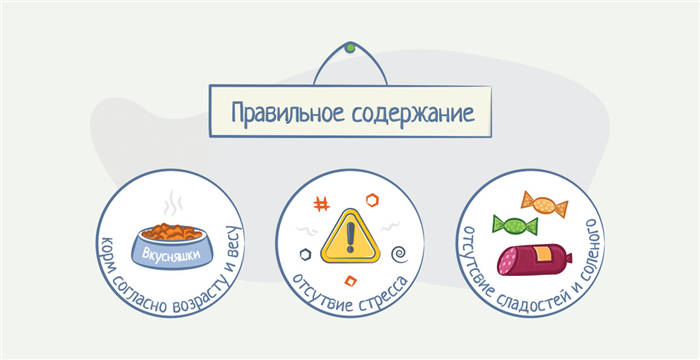
Symptoms
With nocturnal incontinence, the pet wakes up “in a puddle”, with urgent – does not have time to run to the litter box. Reflex emptying is the most noticeable: the animal can pee anywhere at any time.
The owner needs to analyze the overall condition of the animal, such as lethargy, sleepiness, aggressiveness or irritability. Other behavioral disorders: anxiety, refusal to go to the litter box or, conversely, frequent visits to the toilet, also require attention. Pink urine in the cat, the presence in it of mucus, impurities, is an important “bell” to immediately contact the doctor. Do not try to treat the pet yourself. Only after a complete examination and taking all the tests can we prescribe treatment.
What to do if the cat does not retain urine, how to help the animal?
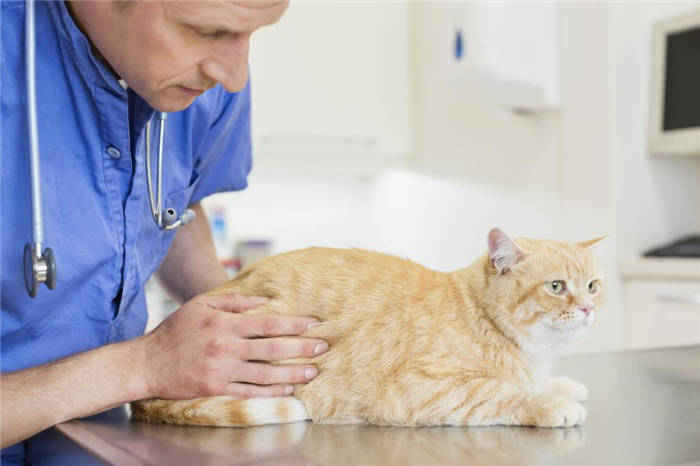
You should not try to solve this problem yourself at home. The only thing to do in this situation is to show the pet to the vet as soon as possible. The veterinarian will find out why the tail patient cannot control urination, and prescribe a treatment.
There are no standard approaches to eliminating this problem. Some animals require observation to normalize the process of urination, others require sedation, and others may require surgery.
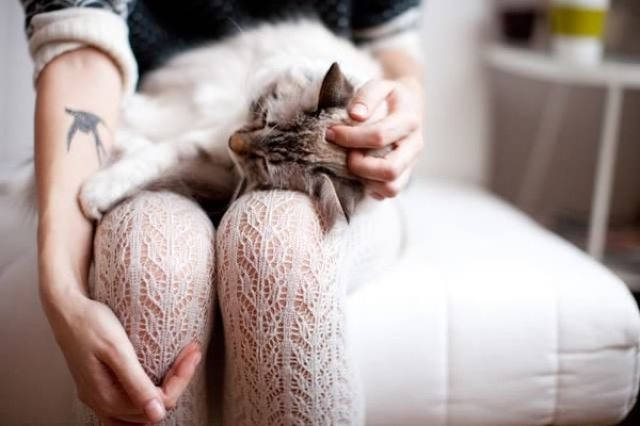
Treatment of incontinence can be conservative or surgical. It is not uncommon for both of these methods to be powerless. We are talking about age-related changes in the musculo-ligamentous apparatus.
The owner of an elderly, constantly peeing pet will simply have to accept this feature of the pet. Disposable diapers can help prevent puddles on the floor and furniture. Postpartum incontinence, incontinence caused by stress or trauma, can go away on its own without medication if you create favorable conditions for the pet.
Cat urinary incontinence – treatment
Once the diagnosis of a particular disease is confirmed by a specialist, the veterinarian must prescribe the necessary treatment. What it will look like depends directly on which ailment has affected the pet.
- Below are some ways to treat incontinence for certain conditions:
It happens that urinary incontinence is Enuresis of an inorganic nature. In such a case, the only recourse in keeping the pet is to The use of animal diapersas well as to increase the number of litter boxes in the house.In this case, the only solution is to use pet diapers and to increase the number of litter boxes in the house so that it is easier for the pet to go to the bathroom.
All information is for information purposes only, we do not encourage you to self-medicate. Uncontrolled medication can worsen the condition of your pet and provoke complications with other organs.
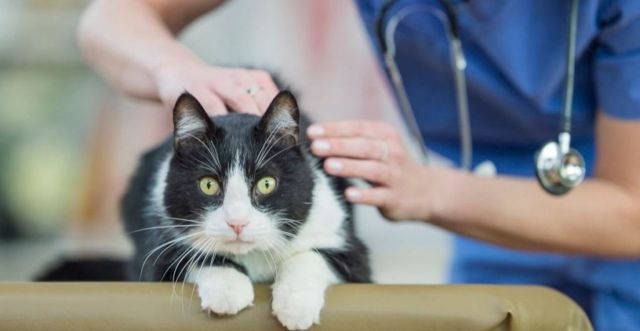
Prevention to prevent cat urinary incontinence
Better than any treatment is the absence of the disease. In the case of incontinence, it is much easier to prevent the cause than to treat the consequence. Preventive measures can be a powerful weapon in the fight against this ailment. All recommendations are written by top veterinarians and are designed to improve your pet’s quality of life. Here are some of them:
- Nutrition – it must be complete and balanced. All nutrients as well as vitamins and minerals should be present
- Vet visits – routine visits to the veterinarian can prevent illness or detect pathology in its early stages, which allows for more successful treatment;
- injuries – avoid injuries to your cat as they may cause urinary incontinence;
- emotional state – try to avoid arguments at home, yelling at the cat, overly strong emotions that may have a detrimental effect on his health.

Prognosis and possible complications
The prognosis for recovery depends on the cause of bedwetting. If infection is to blame, then after antibiotic therapy, the condition of the sick animal is normalized.
A cautious prognosis is given in the case of an aggravating factor in the form of old age. The weakened body of older cats responds worse to treatment. The tissues of such patients can no longer recover, so in most cases the leakage is not eliminated. The owner can only try to preserve the quality of life of his or her pet by maintaining hygiene.
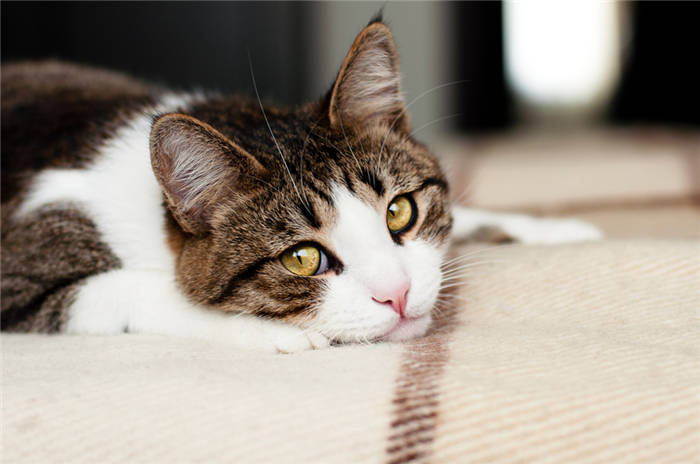
A complete cure is also not possible with severe brain damage resulting in paralysis. Here, the affected department is targeted. When the lower motoneuron is damaged, there is constant urination, and when the upper motoneuron is damaged, there is no urge. In the first case, it is recommended to use diapers, and in the second – to squeeze the bladder manually (that is, by hands), so that it is not stretched by overfilling.
Possible complications of bedwetting include secondary cystitis caused by ascending inflammation due to constant overflow, loss of reproductive function, hydronephrosis and renal failure. If this problem is left untreated, the animal may die.
Preventing problems with the urogenital system
Prevention of pathologies of the genitourinary system is based on the prevention of their main causes. Its main recommendations include:
- Exclusion of prohibited products from the diet.
- A strict ban on mixing cooked food and food from his table.
- Proper organization of the sleeping place, excluding the presence of the pet in a draught.
- Adherence to the vaccination schedule and treatment for internal and external parasites.
- The use of protective “anti-skittles” on windows and harnesses when walking.
- Weight control by periodic weighing.
- Minimizing stressful situations that can affect a cat’s health.
IBC, cystitis and other diseases of the genitourinary system are prone to recur, so do not forget about periodic examinations at the veterinary clinic. They should be done at least once a year, and at least once every six months in the elderly.
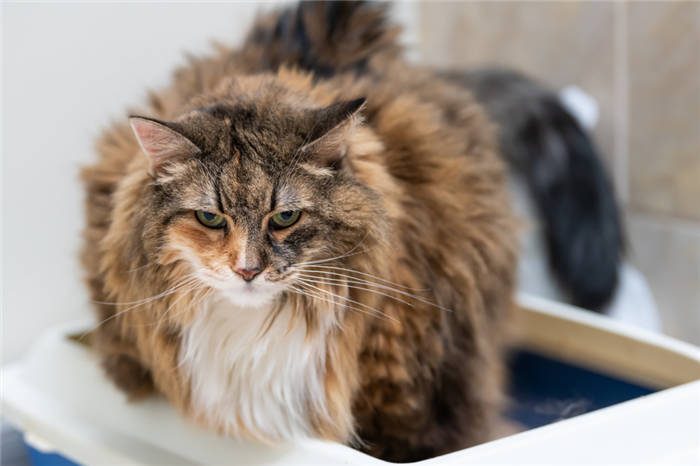
If your cat has urine leakage, take him to the vet. With timely diagnosis you can protect your pet from developing complications. For the duration of treatment, have patience and avoid punishment for puddles you find.
This article is for information purposes only. Contact your veterinarian!






